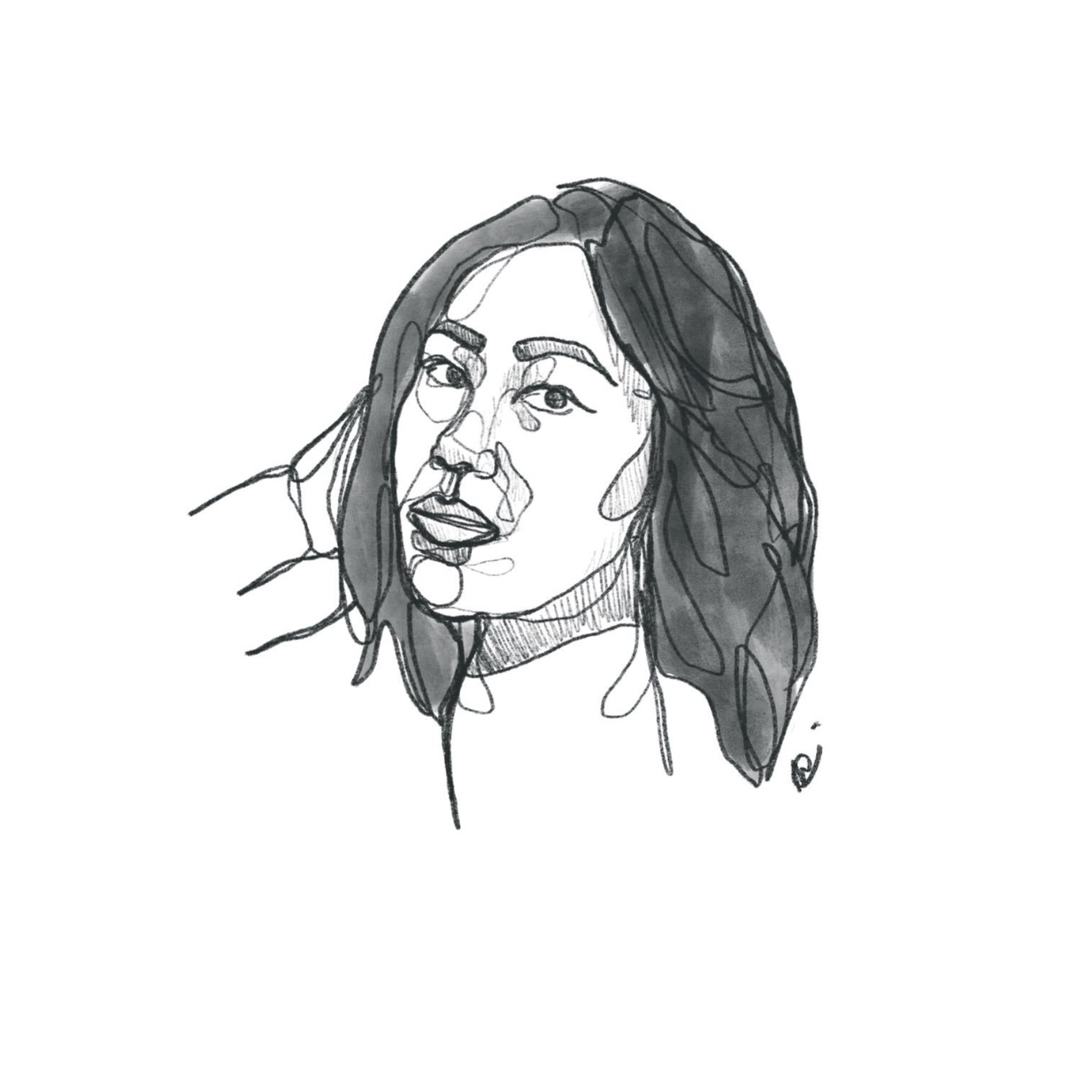Finding Home: Remembering Indigeneity
Where do we go when the motherland doesn’t recognize us, when it feels like we are not wanted anymore? Where do we go when we want to remember? What do we do, when we do? Are we, or will we ever be, indigenous (again)? Who are we, when imperialism has stripped us of home? Who am I, but a child of diaspora? Where is home when you are a settler on stolen land of the “Americas”? Where is home when your people have been divided: indigenous vs. forced to forget?
These are questions I ask myself daily.
The author visiting Auntie L.'s tent, one of the Ilokano farmers at the Filipino Farmers Market in Seattle, WA. The farmers hail from generations of Filipino-Americans who settled in Wapato, WA who continue to farm there. / Photo by Thanh Hằng Phạm
Is home by way of remembering indigeneity?
Six years ago, around the time of summer solstice, my spirit was awoken. I began my journey of remembering who I am, reconnecting the routes to my ancestors. I felt a longing to learn about our people, our hxstory, our culture, our traditions. I would not be who I am today and who I continue to become, had it not been for the support, community, and cultural exchange with First Nations and Native American people in my life who have embraced me as friend and family in cultivating trust, love and solidarity with them. Through the years I’ve been invited to witness and participate at ceremonies and gatherings, and through these experiences, I came to honor and understand what indigeneity meant for my loved ones, and questioned what indigeneity is for Filipino people.
Through the years, I came to understand that Filipinos’ remembrance of indigeneity is through kapwa, the shared self and shared interconnectedness. I came to understand that indigeneity is not only a bloodline or to be originally native to the islands now known as the Philippines. To me, it means acknowledging that we are resilient beings throughout colonization, and that our continued existence honors our ancestors who were indigenous. We must remember that we still carry indigeneity, even if we have been disconnected and forced to forget our rituals, languages and cultures.
We can learn and remember who we are, by learning from the people whose home we have become settlers on. We can remember who we are by recognizing that the people who are currently known as indigenous in the Philippines are our relatives, and that we must care for their struggles, and fight alongside them, just as all our ancestors fought together too. In turn, we must also honor the connection between them and our relatives here on this continent. It’s also our responsibility, as settlers here, to honor and show up in solidarity alongside indigenous people of this land. So I am asking us to honor the water, earth, rituals, cultures, arts, plants and spirits that are alive on our islands as also alive and vibrant in each of us. I’m asking us to believe that remembering indigeneity makes finding home possible.
Remembering Through Plants & Folk Medicine
Over the years, here and there, I’d meet Filipino folks of the diaspora who were also, at times, the lone Filipino at First Nations or Native American gatherings, who were also searching for fellow kapwatids as we would call each other. We’ve crossed paths through our intersecting journeys of remembering: re-learning our languages, cultural and ritual practices, honoring grief of what might be lost and honoring the hope that wisdom might be uncovered. Along the way, I’ve continued to study and learn of Ilokano textiles and tattoo motifs (which I’ll have to share another time) and more recently, Philippine plant medicine.
Last summer was the first time I was able to participate in a gathering on Filipino knowledge. Finally, I was going to learn something from my own people! It was a Philippine Herbal & Folk Medicine class created and led by Angela Basbas Angel, a Bay Area-based healer and medium. This class was a piece of my puzzle, an answer to the questions of “Who am I? Where is home?” We learned about thirty various plants that are grown in the Philippines, some native, others not. We learned about their medicinal properties, how they continue to be used internally and externally, and how to make herbal remedies from some of these plants. Any doubt I had about who I am left me that day. I felt an immediate connection to my roots, my grandparents and the motherland.
I cried throughout the day, surrounded by fellow Filipinos, womxn of color and fellow queer & trans people of color. I allowed myself to let tears well up in my eyes and swim down my face when they were ready. Sometimes I’d wipe them off silently, but mostly I let them journey until my face was imprinted by them. I excitedly took notes, my hand aching to keep up with my excitement. I felt my heart bursting with affirmations that all along, I’ve always been enough, that I’ve always been a native person of what is now known as the Philippines for the last 500 years.
The author picking parya (small Indian bitter melon) one of the many vegetables grown by the Filipino farmers and sold at the market / Photo by Thanh Hằng Phạm
I learned and realized that reconnecting to our ancestral plants can support our peoples’ healing from the many dis-eases that ail us today. Our plants are our food, which has always been our medicine. All of this seemed like such a simple and obvious concept! For me, as an Ilokano, it means remembering and including favorite Ilokano vegetables in my daily diet such as, but not limited to, parya (small dark green Indian bittermelon), bulong ti parya (bittermelon leaves), sabong ken bulong ti karabasa (squash flowers and leaves), saluyot (jute leaves) and marungai (moringa).
After taking this class, I didn’t want to stop learning and connecting to Filipino plants. I didn’t want to stop connecting to what felt like ancient rituals of the motherland. This gave me even more reason to regularly visit the Filipino farmers, most of whom were Ilokano, who would come from eastern Washington to Seattle to sell their fresh vegetables. This farmers market is always a bittersweet reminder of home. I’d linger at every tent, listening to them banter in Ilokano and catch up with aunties, uncles, and grandparents. They’d call me “ading” (younger sibling) or “anak” (child) and I’d shyly speak to them with what little I remember of this mother tongue.
They’d forget I can understand everything they’re saying, probably because I respond to them in broken Ilokano. There was always one auntie who sold marungai. I always bought two bundles every week and she’d always say, “Dua, ading?” And I’d respond with “Wen, Manang” hoping to carry the spirit of home in my hands. I’d think of my Inang Ambrocia (my paternal grandmother), who taught me at four years old how to effortlessly pluck marungai leaves from each little branch with one fell swoop of grace and swiftness. We’d do this together on days that she would cook balatong (mung bean soup). I had forgotten this memory until recently.
The next tent was run by Auntie L., who is my Auntie Cora’s dear friend. I’d always buy small baby tarong (eggplant), bagoong monamon (salted fish sauce), at least twenty parya (bitter melon), kamatis (tomatoes), bulong ti karabasa (squash leaves) if there was any left, and bulong ti parya (bittermelon leaves). I’d always have too many bags once I’d board the bus 36 heading home, but my heart was full and belly excited to make my meals for the week: dinengdeng (Ilokano mixed-veggies soup with bagoong) and chicken soup with bitter melon leaves.
The author smiling during a conversation with Auntie L. while exchanging money for vegetables / Photo by Thanh Hằng Phạm
Honoring My Connection to the Motherland as Indigeneity
I often hope for magical memories and wisdom that might be stored in my solar plexus that will reveal all my family’s ritual truths. This hope of remembering knowledge, is a hope that many Filipinos on a similar journey have shared with me too.
“My paternal grandparents were rice farmers.” This is what makes me feel Ilokano, then Filipino, the identity imposed on our islands centuries ago. Before Spanish imperialism, we were many groups of people, not just one united Filipino identity. I know myself to be Ilokano because my grandparents were connected to the land. This reminds me that my grandparents’ labor and earthly understanding of the land and cosmos lives in my bones and soul, and makes sense of why I am searching for home. It reminds me that I am still in many ways indigenous, even though colonization has re-shaped our cultures, divided our people, and attempted to destroy our powerful wisdom and existence.
I know not everyone in the diaspora has tangible connection to the motherland. I know that indigeneity is complex and not at all simple. This is just one story, my journey, of finding home. Knowing that my most recent ancestors lived by the land, and my affinity towards plant medicine, is enough to let me know that we must remember indigeneity. It affirms that I am worthy as a budding community herbalist and folk healer.
Even after all these years of searching, I am still learning who I am. There is no easy answer. I’ve learned that curiosity and longing to remember who we are, in all our complexities, continues to be the light that uncovers the pathway to home. I’ve learned that honoring the water, earth, rituals, cultures, arts, plants and spirits that are alive on our islands, are also alive in each of us. I believe that remembering indigeneity makes finding home possible.
by Julz Palad Soriano Ignacio
Pronouns: They/Them/Theirs
Julz Palad Soriano Ignacio is a musician, healer, and ritualist. Julz’ art and healing practice is centered in handpoke batek ritual, singing and creating original music, and continued learning and practice of Philippine herbal folk healing. Julz is rooted in and guided by their ever-evolving journey of decolonization, commitment to healing and social justice, and dedication to supporting folks’ healing and self transformation. Julz self-identifies as a genderfluid disabled hard-of-hearing queer Ilokano femme, and currently resides in Duwamish territory (aka Seattle, WA).

















